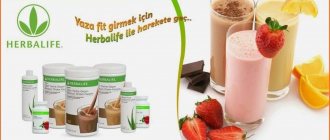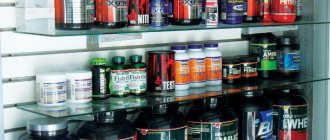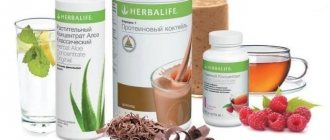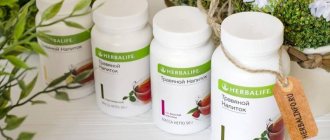Factors Required for Protein Eating
Protein is protein. On average, the human body can consume 2 grams of protein per kilogram of body weight per day. Unfortunately, there are exceptions when it is necessary to reduce or increase the dosage. Factors for consuming sports nutrition: 1. A child leading an active lifestyle, involved in professional sports, needs to take additional protein. Despite his early age (up to 14 years), he needs dry supplements, protein for muscle growth, proper mental, emotional, physical development, as well as weight gain. 2. Diseases associated with a lack of protein in the body play a big role in taking supplements. The consequences of a lack of this organic substance can be fatigue, apathy, depression and various diseases affecting the circulatory system, brain, muscle and bone tissue.
3. Athletes are supporters of the use of protein supplements. They need it to strengthen bones, maintain physical fitness, develop coordination, and endurance. A person leading an active, sporty lifestyle needs to constantly monitor the protein content in the blood.
Arthritis and the use of protein supplements
Certain protein foods may affect arthritis by affecting the immune system, causing allergic reactions or weight problems.
There are two main types of arthritis:
- osteoarthritis;
- rheumatoid arthritis.
Each of them “reacts” differently to a decrease or increase in protein in the diet. Gout manifests itself as an acute inflammatory reaction due to excess uric acid in the blood, therefore excess protein in the form of meat and fish with a high content of purines increases the symptoms.
Osteoarthritis is a degenerative disease that usually occurs in old age and is associated with excess weight and a sedentary lifestyle. But illness is not a contraindication for taking protein supplements. Doctors recommend consuming 46 grams of protein per day for women and 56 grams for men ages 19 and older for optimal health.

Studies have shown that eating a low protein diet reduces the signs of rheumatoid arthritis. However, the meat of fatty cold fish, being a good source of protein, blocks the production of substances that cause inflammation.
The best way to test the effect of protein supplements on arthritis symptoms is by keeping a food diary. If, after a certain food or cocktail, increased pain or redness in the joint area was observed, then the product or dietary supplement must be excluded for a week to see positive changes.
Features of a developing organism
The bodies of children and adolescents have a specific development: a special structure, especially at an early age. The science of pediatrics studies this area. The child’s body has a number of features: 1. The bones of a newborn baby are weak and not supported by organic and inorganic substances. That is why pediatricians recommend introducing the first complementary foods starting at three months. 2. Colic in a child usually begins after parents began to give various supplements, gradually replacing breast milk. The protein contained in baby food, along with lactose, improves the digestive system, develops attention, new emotions, and the first manifestation of speech. Children are allowed to take protein shakes, but with the confirmation of a pediatrician. 3. Being in the age range from 3 to 7 years, the child begins to feel discomfort in the oral area. It is during this period that teeth change. In children, this is a painful process that can cause fever, pain, and fatigue. If the condition worsens, doctors recommend introducing dry protein foods to stabilize the teeth and oral cavity. 4. Adolescence, according to scientists, lasts from 14 to 18 years. It is during this period that the child undergoes hormonal development. Irritability, depression, intractability are a manifestation of the effect of hormones on the child’s brain. If a teenager is intensely involved in sports, then if there are symptoms of protein deficiency, doctors recommend starting to drink protein from the age of 14 in small doses. 5. The next stage of hormonal development occurs at 16 years of age. During adolescence, parental control over nutrition is required. Hormonal imbalance reaches its peak during this period. It is difficult for athletes to get out of it without protein supplements. At age 16, doctors recommend consuming protein powder with meals. 6. At the age of 18, the formation of the body ends. At this age, a person chooses his own sports nutrition, bcaa, protein and, with the help of doctors, calculates the correct dose for his weight.
Important! From the very birth of a person, protein becomes an integral part of him. Before using protein powders, bcaa at any age, you should consult your doctor.
Prohibited additives
Substances prohibited for use by children and adolescents include: sodium nitrate - E 251, potassium nitrate - E 252, sodium nitrite - E 250. These additives are found in smoked products and are used in cheese making. Also, the most famous artificial additive is glutamic acid or E 620 and its salts - monosodium glutamate (E 621). In carbonated drinks, instead of natural ingredients, I use flavor substitutes. The most dangerous of them is fructose.
Natural products are a rarity in the modern world. They use additives, chemicals, and substitutes in everything. The harm of protein lies in its modifications that manufacturers use. They have a negative impact on our body. But there are also good sides. Protein is a protein that helps children, teenagers, and athletes keep in shape, develop in the right direction, and improve their lives.
The benefits of drinking protein shakes when gaining muscle mass. Their main varieties and nuances of choice.
The Internet is a source of knowledge, no doubt. But it contains a lot of contradictory information that cannot be trusted unquestioningly - it must be “filtered”. In particular, novice athletes are faced with statements that drinking protein is very harmful. At the same time, additional protein is completely dangerous for teenagers. So, is protein bad for your health? Let's look at this in more detail.
Casein or whey protein?
Whey protein is a fast-digesting protein with high biological value and it greatly enhances protein synthesis compared to casein. However, casein has the property of preventing muscle breakdown due to its slow digestion and long-term supply of amino acids to the muscles. Casein cannot be substituted for whey protein (or vice versa). These are different foods that help in muscle building and support in different ways. By combining casein and whey protein together in protein complexes or consuming them separately at the right time, you can achieve more effective and rapid muscle growth and muscle mass gain.
About protein
When it comes to protein and its “harm” to the body, you want to “scream” about the stupidity of this statement. Protein contains many different amino acids that are necessary for building a healthy body. We are made of meat, for which amino acids are the “building blocks”, the basis for growth.
A child's body is special. Many people know that proteins tend to break down, because they are difficult to classify as stable compounds. Moreover, in children and adolescents, the process of destruction occurs much more slowly than the process of creating protein cells. Due to this, the body grows and develops. In adults, the opposite is true - protein destruction occurs faster than its creation. As a result, we grow old and die.
Misconceptions
Many people believe that protein is a chemical product and therefore harmful. This approach is erroneous and baseless. In fact, protein sports nutrition is made exclusively from natural products - there are no “chemicals” in it. But we have plenty of it in mayonnaise, sauces, canned food and other products on our table. Therefore, the question of whether you should drink protein disappears by itself. If you need it to achieve high athletic results or due to an acute shortage in the body, then why not.
Research
Many studies have been conducted on the harm of protein and its effect on the body of adolescents. No negative effects were found. There is only one danger, but it has a psychological basis. A teenager who started with “weak” supplements may eventually switch to more dangerous ones, for example, steroids.
The problem is that the child is too susceptible to what is shown on TV. He wants to be the most beautiful, to arouse the envy of his peers, and girls like him. For this reason, he may take dangerous drugs without even thinking about their negative effects.
Soy Protein
The main advantage of soy protein is that it is not of animal origin and is great for vegetarians and people with lactose intolerance. Moreover, soy protein is rich in the amino acid arginine (about 8 grams per 100 grams of protein). As for the anabolic effect of soy protein, it is lower than that of whey protein, but soy protein, like casein, tends to prevent catabolism. Soy is good for those athletes who are not looking to build muscle mass. Soy protein contains valuable components such as saponins and phytosterols. Saponins support the immune system and lower cholesterol levels. Phytosterols also maintain cholesterol levels within normal limits. Soy protein does have one downside (at least for male bodybuilders). Soy protein is rich in isoflavones and because of this, men need to be careful about regularly consuming soy protein in large quantities. The fact is that regular consumption of soy protein quite significantly reduces testosterone levels. Studies have shown that taking 32 grams of soy protein daily for 29 days reduced testosterone levels by 10%. And after 57 days, the level of female hormones exceeded the level of testosterone. On the other hand, it is believed that thanks to soy isoflavones, you can protect your body from cancer and cardiovascular diseases.
What about as a teenager?
There is an opinion that it is better for teenagers not to drink protein. This is partly true, but not because it is harmful or dangerous. It’s just that at a young age you can get excellent results without sports supplements - just organize the right diet with all the necessary beneficial elements and vitamins. Combined with quality training, this gives results. If you need to take additional protein, please do so. There's nothing wrong with that. The main thing is to follow the dosage and take into account contraindications, which we will discuss below.
On the other hand, teenagers are not recommended to take supplements that have a strong effect on the hormonal system - they are really dangerous. It makes no sense to increase testosterone levels, because they are already very high. Additional substances can only harm a young body.
What can you take?
Until the age of 16, protein will not be superfluous for teenagers who set serious goals for themselves and plan to achieve success in bodybuilding. The full amount of nutrients can be obtained from food, but this is not always possible due to the increased needs of the athlete’s body. For example, a young body needs about 1.5-2 grams per kilogram of weight. It’s easier to eat one or two protein bars and drink a protein shake than to swallow a dozen eggs or a kilogram of meat and cottage cheese.
Don't forget that there are different forms of proteins. For teenagers under 16 years of age, the best options are whey and casein proteins. They are absorbed differently and provide the body with the full amount of protein within 24 hours. Vegetarians can take soy protein (but again, without fanaticism).
PROTEIN - a natural product?
As I already told you, protein is a healthy and completely natural product because it is made from NATURAL RAW MATERIALS. Most of all those colored jars labeled PROTEIN contain processed MILK, and some contain processed EGG white or SOY white.
It is from MILK that most protein sports nutrition products (proteins) are made. Why? Because firstly, milk protein is very good due to the good quantity and quality of the “building blocks” (amino acids). And secondly, milk as a raw material is cheaper than eggs or meat. By the way, this is why most nutritional formulas for newborn babies are also made from milk. By and large, such a mixture and a jar labeled “protein” differ only in the protein-carbohydrate proportion. Formulas for newborns contain a little more carbohydrates, because in children carbohydrate metabolism predominates (which is why children love sweets so much), and formulas for athletes, more often (but not always), have a little less carbohydrates, but more proteins, because they have In adults, protein metabolism predominates in the body.
In the 90s, therefore, athletes most often used “baby food”, because foreign food was expensive and difficult to obtain, and baby formula could be bought in any store. And in principle, such mixtures are no different from sports nutrition products.
95% of the time, if you see a colored can labeled PROTEIN, it contains processed milk. We can say, for figurative purposes, that this is a mixture based on POWDERED MILK, only much purer and better. I'll tell you why it's better a little later.
Protein from milk can be of two main types : from whey ( WHEY PROTEIN ) and from curdled milk ( CASEIN PROTEIN ). These two proteins are the most popular in the diet of a person leading an active lifestyle. Whey protein is absorbed very quickly and enters the bloodstream; this may be necessary, for example, in the morning after sleep, when the body urgently requires food, or immediately after a workout, when protein was spent on training and needs to be quickly replenished. Casein protein, on the contrary, curdles in the stomach and takes longer to digest. This may be necessary when you do not have the opportunity to eat for a long time (at night or at work for a long time). Casein protein is cheaper and therefore most infant formulas contain it. Remember when I said that baby and sports nutrition are essentially the same thing? So, if we are talking about casein supplements with a large amount of sugars, then the clarification “IN ESSENCE” should be removed altogether. It is the same!











